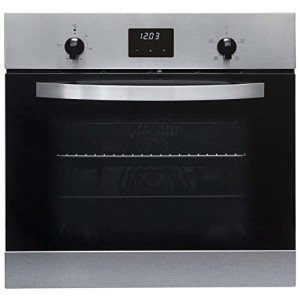Understanding Oven Hobs: The Heart of Culinary Crafting
In the realm of modern-day kitchen areas, the oven hob stands out as a vital device. Not only is it a main part for cooking a variety of meals, but it likewise influences kitchen aesthetic appeals, performance, and effectiveness. Read More Listed here looks into the types of oven hobs, their functions, benefits, and maintenance tips. In addition, it attends to some often asked concerns to provide a detailed understanding of this necessary kitchen appliance.
Kinds Of Oven Hobs
Oven hobs can be categorized into several types based on their energy source and design. Comprehending these variations can help consumers make informed choices when choosing the perfect hob for their kitchen requires.
1. Gas Hobs
Gas hobs use gas or propane as fuel, providing accurate temperature control and immediate heat. They are preferred by many chefs for their capability to supply visual feedback through flame.
Pros:
- Quick heat-up time.
- Exact temperature adjustments.
- Suitable with all kinds of pots and pans.
Cons:
- Requires a constant gas supply.
- Security concerns with open flames.
- Requires more upkeep.
2. Electric Hobs
Electric hobs are powered by electrical power and feature smooth glass or ceramic surface areas. They typically can be found in 2 types: coil and solid.
Pros:
- Sleek look.
- No open flames, reducing safety risks.
- Easy to clean.
Cons:
- Slower to warm up and cool off.
- May require particular pots and pans (induction).
- Some may have uneven heat distribution.
3. Induction Hobs
Induction hobs utilize electromagnetic energy to directly warm pots and pans. They only work with ferromagnetic pots and pans.
Pros:
- Very energy-efficient.
- Fast cooling and heating times.
- Safe, as the surface area stays reasonably cool.
Cons:
- Limited to particular kinds of pots and pans.
- Higher preliminary cost.
- Can produce noise when in use.
4. Solid Plate Hobs
These electric hobs feature solid metal plates that warm up and maintain heat for cooking.
Pros:
- Durable and dependable.
- Straightforward operation.
Cons:
- Takes time to heat up.
- Less effective than induction and gas models.
| Hob Type | Heat Source | Aesthetics | Maintenance |
|---|---|---|---|
| Gas Hobs | Gas | Traditional | Moderate |
| Electric Hobs | Electrical power | Modern/Sleek | Low |
| Induction Hobs | Electro-magnetic | Contemporary | Low |
| Strong Plate Hobs | Electricity | Traditional | Average |
Features to Consider When Choosing an Oven Hob
When selecting the perfect oven hob for your kitchen, there are numerous vital features to consider. These include:
- Size: Ensure the hob fits the designated area in your kitchen.
- Number of Burners: Consider your cooking style and the number of burners you'll need.
- Control Type: Look for easy to use controls, whether touch-sensitive or knobs.
- Security Features: Many contemporary hobs include precaution like flame failure devices or kid locks.
- Energy Efficiency: Choose energy-efficient designs to save on energy costs and decrease your environmental impact.
Benefits of Using an Oven Hob
The oven hob offers a number of benefits that accommodate both amateur cooks and professional chefs. Here are some key benefits:
- Versatility: Whether boiling, frying, simmering, or sautéing, an oven hob accommodates numerous cooking strategies.
- Convenience: Many hobs included extra features like timers and automated shut-off systems for included convenience in hectic cooking areas.
- Enhanced Cooking Control: The immediate heat actions of gas and induction hobs permit much better control over cooking temperatures.
- Style Enhancement: Modern hobs can enhance the overall aesthetic of a kitchen, adding a contemporary touch.
Maintenance Tips for an Oven Hob
To guarantee the longevity and performance of an oven hob, appropriate upkeep is essential. Here are some upkeep ideas:
Regular Cleaning:
- Use a soft cloth and moderate cleaning agent to clean surface areas after each use.
- For induction and ceramic hobs, prevent abrasive cleaners to avoid scratching.
Look for Wear and Tear:
- Inspect rubber seals and connections in gas hobs regularly for any damages or leakages.
- Ensure electrical connections are safe in electric hobs.
Professional Servicing:
- Schedule regular maintenance consult a qualified technician to prevent major issues.
The oven hob is a vital element in any kitchen, serving as a centerpiece for culinary undertakings. Whether picking gas, electric, or induction, understanding the numerous types, functions, and maintenance requirements is essential for making an educated choice. A well-chosen hob not just improves cooking effectiveness but likewise boosts the general kitchen experience.
Regularly Asked Questions (FAQs)
1. What type of hob is best for a beginner?
Electric hobs are frequently preferred by novices due to their ease of usage and maintenance.
2. Can I utilize all cookware on an induction hob?
No, induction hobs need ferromagnetic pots and pans for them to work properly.
3. How do I understand if my gas hob is working efficiently?
Routinely inspect for even flame distribution and listen for any hissing noises that might indicate leakages. If in doubt, speak with an expert.
4. Is a greater cost constantly much better for hobs?
Not always. While higher-priced models might use innovative features, several mid-range items offer exceptional efficiency and durability.
5. Can I install a hob myself?
It is suggested to work with a professional, specifically for gas hobs, due to safety issues and local regulations.
By understanding the subtleties of oven hobs, home cooks can make a well-informed decision that lines up with their cooking aspirations and kitchen styles. Selecting Read More Listed here cooking experience and kitchen aesthetic appeals, making it a key financial investment for any home.

